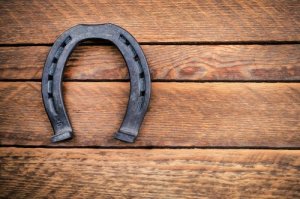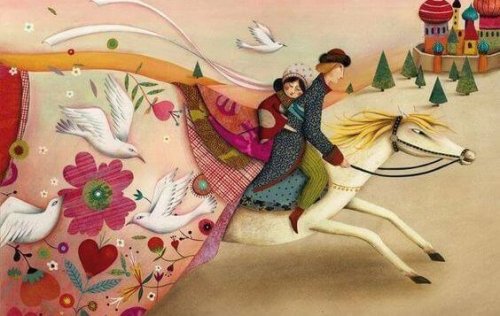Why Horseshoes are Considered Good Luck Charms

Horseshoes are the oldest good luck charms in the history of the world. Their supposed effects range from bringing good luck to dispelling problems and conflicts, even though they are just pieces of metal. Their peculiarity lies in their U shape. Additionally, they are used for horses to minimize wear on their hooves.
You might like: Bad Luck? Turn Negative Thoughts into Positive Ones
It’s necessary to mention that the position of the horseshoe’s points brings different effects:
- Pointing downward: brings protection.
- Pointing upward: brings good luck.
Horseshoes as Good Luck Charms
First origins
Our ancestors began using horseshoes as talismans when they realized that its U shape resembled a crescent moon. The first civilizations believed that celestial bodies such as the sun and the moon could bring good luck and fertility in women.
For this reason, the idea of horseshoes bringing good luck came about where horses were domesticated animals. In other words, the ancient Greeks introduced the horseshoe to Western Civilization. Since then, the horseshoe has been considered one of the most important good luck charms.

San Dunstan and the devil
Nevertheless, it was during the 10th century that people started hanging horseshoes on their doors to protect their homes, thanks to the figure of San Dunstan. Dunstan was a blacksmith who became Archbishop of Canterbury. But, why horseshoes and not any other object made by this blacksmith?
Legend has it that the Archbishop received a visit from a man who came to ask him for horseshoes. However, he wanted them for nothing other than his own feet, which strangely resembled those of an animal. At that moment, Dunstan realized it was the devil.
Therefore, San Dunstan fulfilled the request of Satan without letting on that he knew who he really was. He told him that the only way to put them on was by hanging him on the wall. With that, the devil begged for mercy.
The blacksmith took this opportunity to demand that the devil not enter any house that had a horseshoe hanging on the door.
This story quickly became well known among the Catholic community. This word of mouth produced a lot of changes in history, thus the habit of spitting on the horseshoe and passing it over your left shoulder. It also fits that people began fashioning rings from the nails of horseshoes, which supposedly had healing properties.
You might like: 5 Keys to Overcome and Face the Unknown
Ancient civilizations
With that under consideration, people were using horseshoes as talismans long before the 10th century. It seems as though the Greeks believed that metal was a material that chased away evil. This might be the reason they used it in battle.
On the other hand, the horseshoe’s crescent shape made people believe that the celestial bodies would bring them good luck and fertility via this object.
On top of all this, it’s necessary to mention the magic number: 7. It’s no coincidence that you happen to need 7 nails to attach the horseshoe to the horse’s hooves.
Finally, during the Middle Ages, people began using horseshoes to protect themselves against witchcraft. This is due to the popular belief that witches flew around on broomsticks because they were afraid of horses. For this reason, in Russia, blacksmiths were considered men of white magic.
This belief was so extensive that blacksmiths began officiating wedding ceremonies. Additionally, anvils became the only piece of equipment you could make rings on.

The history of horseshoes is definitely extensive and confusing. But one thing is clear: almost all Western civilizations considered this object a talisman, and therefore it continues to be one of the most well known good luck charms.
Each individual can choose whether to believe in these superstitions, which are found among civilizations so separated by space and time.
All cited sources were thoroughly reviewed by our team to ensure their quality, reliability, currency, and validity. The bibliography of this article was considered reliable and of academic or scientific accuracy.
- EcuRed. [Internet]. Herradura. Disponible en: https://www.ecured.cu/Herradura
- Religión en Libertad. [Internet]. San Dunstan de Canterbury, abad y arzobispo. 2017. Disponible en: https://www.religionenlibertad.com/santo_de_hoy/56879/san-dunstan-canterbury-abad-arzobispo.html
- Sobre Leyendas. [Internet]. El Diablo y San Dunstan. Disponible en: https://sobreleyendas.com/2008/05/14/el-diablo-y-san-dunstan/
- Zamora Merchán, M. y Quesada Sanz, F. La cuestión de la herradura en la Antigüedad. El caballo en la antigua Iberia. Estudio sobre los équidos en la Edad del Hierro. 2003: pp. 145 – 178.
This text is provided for informational purposes only and does not replace consultation with a professional. If in doubt, consult your specialist.








